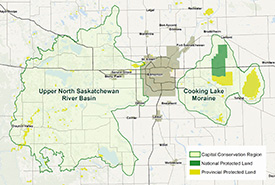Capital Conservation Region
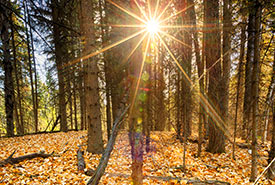
Bunchberry Meadows Conservation Area, AB (Photo by Kyle Marquardt)
The Capital Conservation Region encompasses two priority areas of great ecological significance: the Upper North Saskatchewan River Basin and the Cooking Lake Moraine.
So far, more than 3,520 hectares (8,700 acres) have been successfully conserved between both areas.
The "knob and kettle" topography of Alberta's parklands supports a high diversity of vegetation, waterfowl, mammals and birds, and functions as an extensive groundwater recharge area. This ecoregion's highly productive wetlands provide vital breeding habitat for North American waterfowl populations and other important species.
Critical habitat to the east and west of Edmonton sustains a high diversity of rare species and globally significant concentrations of migratory birds. The area supports extensive boreal forest habitat, is a vital component of freshwater health for the region and provides wetland breeding grounds for many species of North American waterfowl, making our work around Edmonton vital.
Thanks to a climate that is more moist than the rest of the province, Alberta's parklands landscape offers excellent growing conditions for plants. This makes the area a magnet for farming and development. The conservation of remaining natural areas in this area is incredibly important.
The region is under increasing pressure due to development. As a result, the valuable natural features are at risk of fragmentation and degradation.
Learn more about the Cooking Lake Moraine with our interactive story map here.
Featured projects
- Just east of Edmonton, natural forces converged over thousands of years to create an area covered with forests, lakes and wetlands. This area is now home to an incredible diversity of life. The Beaver Hills Conservation Campaign will connect and conserve this important landscape.
- The Busenius property is located approximately one kilometre south of the North Saskatchewan River in a landscape that provides important habitat for numerous species, including a resident herd of approximately 40 elk.
- The Hopkins Conservation Site is situated within one of the richest biological areas in the province. Located 100 kilometres southwest of Edmonton, the lake is located within one of the richest biological areas of Alberta.
- The campaign for Bunchberry Meadows was officially launched in Edmonton on May 21, 2015. Since then, Edmontonians have stepped up in support of this project so that this special community amenity can be created.
Come visit us
Visitors are welcome at many conservation areas protected by the Nature Conservancy of Canada (NCC). These special, natural places provide excellent opportunities for hiking, birdwatching, nature photography and other compatible recreation activities.
This year, get out into nature. Go to connect2nature.ca for information on visiting our properties in Alberta. We'd love to show you what we are able to accomplish, thanks to the generous support of our landowner partners and donors.
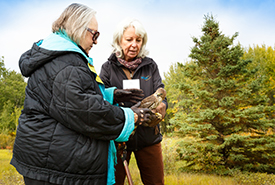
Joanne Laskin and Kim Blomme, gathering for nature, Bunchberry meadows, AB (Photo by Kyle Marquardt)
Allowable activities on NCC properties and access
Allowable activities on NCC properties are defined by each property's management plan. There is no one-size-fits-all approach to the kinds of recreation activities that visitors can engage in on our conservation lands. Some properties remain completely closed to the public in order to protect the sensitive ecology that made the land so important to conserve. Other conservation areas can withstand a wide range of recreational pursuits without harming the natural habitat.
Our partners in this region
-
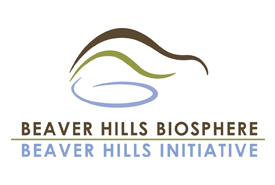
The Beaver Hills Initiative was created in 2002 to address concerns about the effects of rapid growth in the Beaver Hills Moraine, which was designated as a UNESCO Biosphere in March 2016. It’s a group of partners working towards socio-culturally and ecologically sustainable economic and human development.
-
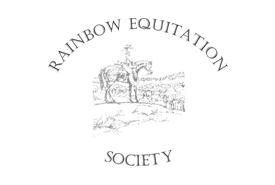
The Rainbow Equitation Society (RES) was founded in 1982. Since then it has evolved into also supporting conservation efforts and promoting responsible outdoor recreation. RES stewards several natural areas, including the Halfmoon Lake Natural Area and NCC’s Ghost Horse Hills property.
Find an NCC representative in this area:
Upper North Saskatchewan River Basin: Alberta region office
Cooking Lake Moraine: Delaney Schlemko


